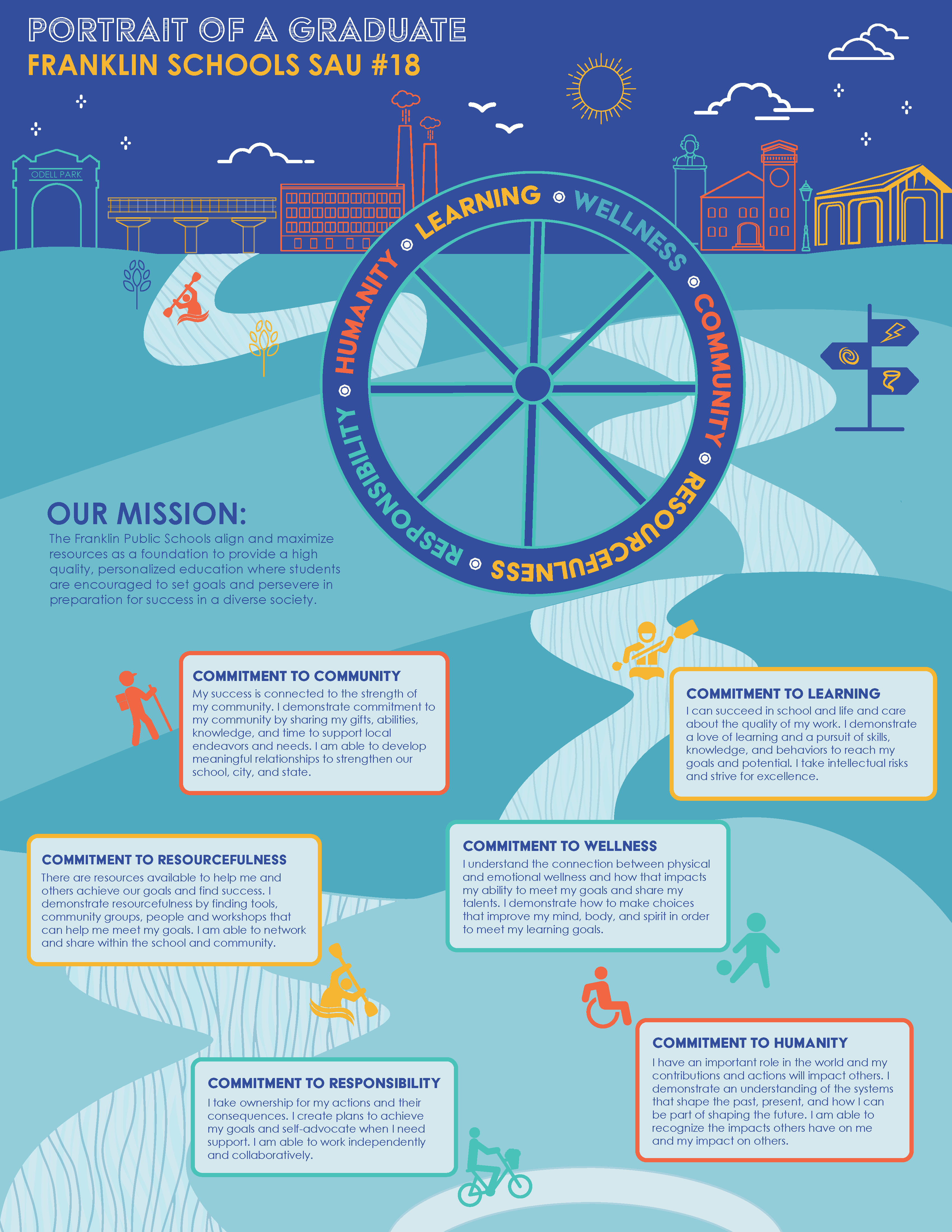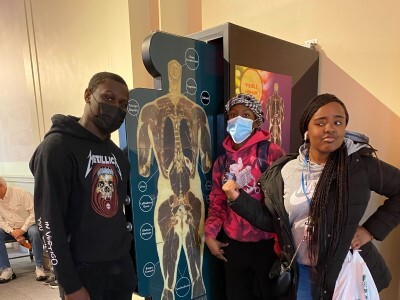New Designs for School
Franklin School District: From Portrait to Practice
Topics

We’ve all had the experience of truly purposeful, authentic learning and know how valuable it is. Educators are taking the best of what we know about learning, student support, effective instruction, and interpersonal skill-building to completely reimagine schools so that students experience that kind of purposeful learning all day, every day.
When teachers and community members start planning lessons together, real-world projects change how students learn and what they achieve.
At a recent professional development day, teachers at Franklin School District in New Hampshire had a day of learning unlike one they had experienced before. The first difference, the learning happened off campus in the community. Another shift, community members were invited to be a part of the learning experience working alongside teachers to brainstorm and play with new ideas. Franklin is deeply embedded in a Portrait of a Graduate process with a goal of improving outcomes for students. Involving the community is essential for long term success and sustainability.
The event started with participants taking on the challenge of designing a course or unit based on a randomly selected topic. Harry Potter, Afghanistan, Star Spangled Banner, Zombies and The Newspaper among others were in the mix. From there they had to incorporate each content area represented in their group. So, the group that chose Zombies had to make sure English, science, and wellness competencies were all addressed and assessed in the unit. The idea generation was fast and joyful! Although there clearly is not enough time in a couple of hours to create a whole class, teachers knew that they could and saw firsthand it was possible to do school differently.
Franklin School District educators describe the unique professional development day. (Courtesy of Educating for Good)
After lunch, community partners presented some projects they were working on. Teachers were asked to imagine how their classrooms might connect to that work. They then had small group conversations with each community member to generate ideas and make new connections. One idea that was sparked that day was in a conversation with Dan Darling, the director at the Franklin Opera House, Jule Finley who produces plays there throughout the year, and Joanna Marcotte, a newly hired computer science teacher. That one conversation led to Joanna’s students showcasing skills they just started developing two months before in a Python programming class and giving back to the local theater community.
Projections are seeing more widespread use in theater productions as a more flexible and dynamic way to create backdrops. The theater programs run by Jule at Franklin Opera House are no different. Usually, they are purchased from between $1,000 and $1,500 per show from professional design houses. For some shows, these projections make all the difference, especially for productions with multiple scene changes. Could students in Ms. Marcotte’s class, who just started learning to code four months ago, produce quality projections that could be used for an upcoming show? Yes, they can, and they did.
Members of the class offered some insight into the process they used. First, they had to brainstorm backdrop scenes. They made a list and divided up the scenes to make sure there was a variety to present. Then they got to work checking out professionally produced projections, designing their scene with coding skills they already had, and researching how to write codes they hadn’t learned yet. The play has an underwater theme, so moving bubbles was definitely an interest. When they were finished students pitched their ideas to Jule who noted they weren’t professional design house quality, but they were impressive and would be used in the upcoming production. After some feedback from Jule and Joanna, students made additional adjustments and now they wait for the show this summer.
The animated projections designed by high school students in their computer science course will be used in an upcoming production at the Franklin Opera House. (Courtesy of Franklin School District students)
I visited the class to ask them about this project. Because Python was a class added over the summer when Joanna was hired, many of the students didn’t exactly know what they were walking into… a new course and a new teacher. A couple of students had even contemplated dropping the class after the first week. They ended up staying, however, and even though only a few are interested in exploring coding as part of their postsecondary education, everyone has a new appreciation for their new language skills and what they can do with Python.
I asked them if having an outside audience changed the way they approached this project. Students shared that it actually was more than just Jule they were hoping to please. They had to think about all the people that would be coming to the play, the actors, and the technical crew. Joanna noticed that for this project students did a lot more research than they had done with previous tasks where she was the only audience.
The idea that these projection designs might be used in an actual theater production also had students stretching their skills. For design elements that they had not specifically learned about, like making bubbles rise to the surface, they transferred what they did know, how to make a circle, to animate their projection. One student noted that he looked at a future lesson to make his design a reality. By doing so, he demonstrated strategic thinking and transfer of skills and knowledge to new contexts.
Looking forward, Joanna is offering Python II next year and has brainstormed other ways to connect her classes to the community through performance tasks. There are lots of coding possibilities throughout the community. Franklin will also start a Computer Science Honor Society this spring that has a service component for members. This example is just one of many ways that Franklin is putting its Portrait of a Graduate into practice.
Franklin School District is going through a Portrait of a Graduate Process with generous support from the Barr Foundation. Educating for Good is helping to support their journey. To learn more about what a Portrait of a Graduate Process looks like, check out this resource from Barr Foundation and NGLC.

Franklin School District Portrait of a Graduate
(Courtesy of Franklin SAU #18)




